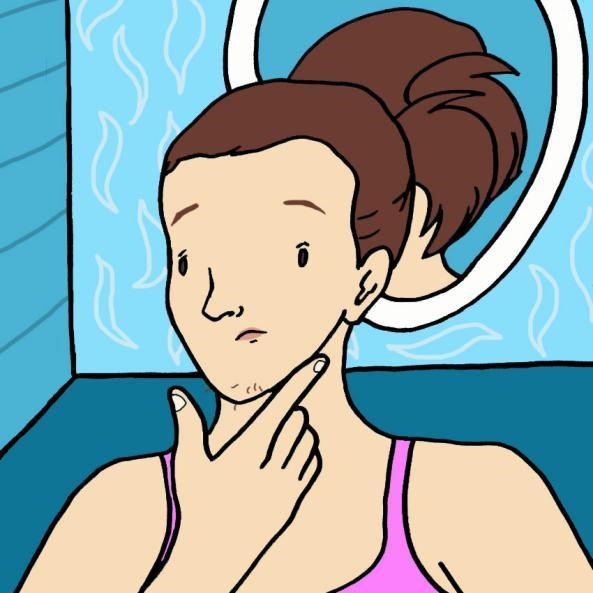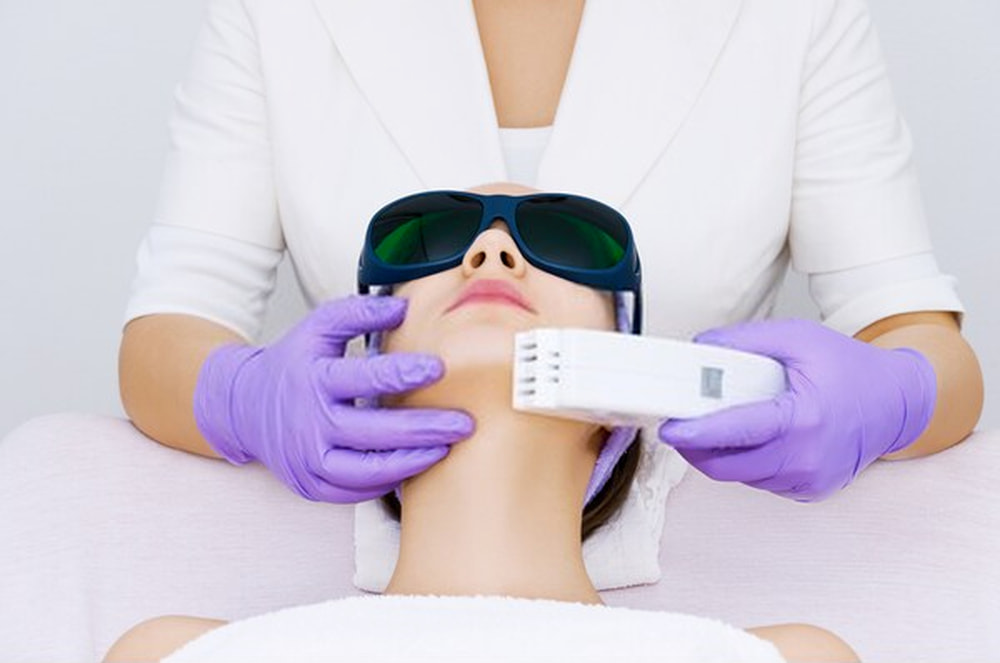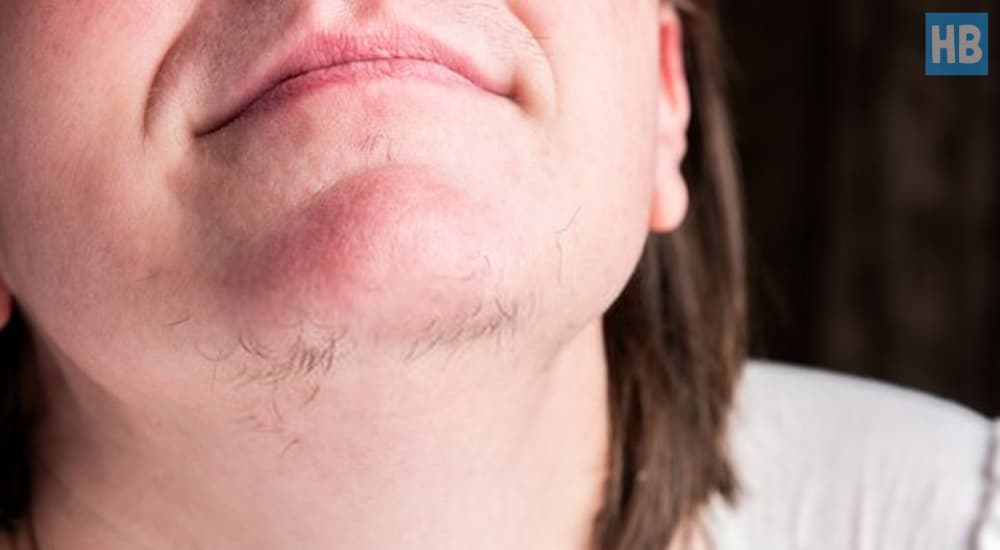Table of Contents
Chin hairs on men are the norm. But on women? Uh, nope-definitely a NO.
Facial hairs, apart from eyelashes and eyebrow, don't just mix well with women. Maintaining clear skin by following a strict skincare regimen is commonplace nowadays. However, the only thing that we cannot control is unwanted facial hair like chin hair.
For some women, excessive growth of chin hair can be unbearable. That is why we scour for ways and options on how to get rid of them for good. Well, you're in luck because this article explores some ways on how you can say finally say goodbye to your chin hair.
First of all, why do some women have hair on the chin?
Let us first discuss the elephant in the room. In general, women, even those who are naturally hairy, don’t have chin hair. So, how come this happens to some?
For starters, you should know that facial stray hair is not entirely uncommon for women in their mid-20s and beyond. And usually, hair increases as you age. Why? That's because chin hair in women is often driven by hormones.

We all know that testosterone is a sex hormone that's more predominant in men. But did you know that it's also the top hormone that promotes hair growth? When ladies experience hormonal changes, and specifically, higher testosterone levels, one of the results is unwanted hair growth. The medical term for this is hirsutism.
Hirsutism is described as an excess growth of dark and coarse hair on areas where hair doesn't naturally grow. These include your face and back. And believe it or not, but this condition is prevalent among ladies. Yes, you read it right. According to studies, out of 10 women, one is affected.
As such, it's important to know that hirsutism is very rarely concluded as a medical condition in its own right. Rather, it is usually stemmed from an underlying health issue like polycystic ovarian syndrome, or PCOS for short. PCOS is one of the leading causes of why women undergo hormonal changes and higher testosterone. It is usually associated with symptoms like acne, oily skin, and irregular menstruation cycles.
Hairiness or hirsutism: is there a difference?
Genetics and ethnicity are constant variables in a person's hair color, thickness, and distribution. Therefore, it isn't safe to say that a woman with more body and facial hair has hirsutism. For instance, women with Indian, Mediterranean or Middle East blood typically have a dark body and facial hair.
However, if hairiness runs in your family, then it's perfectly normal and it isn't associated with any health condition.
Now, how can you get rid of your chin hair for good?
The first step to a permanent chin hair removal is clearing up the issue of whether you have a medical condition that’s causing abnormal facial hair growth or not. It is highly recommended to treat whatever that condition may be. Otherwise, getting rid of your chin hair will just be a futile attempt, instead of a permanent solution.
Even with the kind of technology we have today, there isn't really a long list of hair removal options that can permanently get rid of unwanted hair. Shaving and tweezing are out obviously. So, we are only left with a few technological procedures and a handful of DIY methods. Learn about them by continue reading below.
1. Laser Hair Removal

Perhaps, the most sure-fire way to get rid of your chin hair for good is through a laser. Except for the eye area, laser hair removal can be done in any facial and body areas.
It is one of the two technological treatments available today that can permanently eradicate unwanted hair. This method involves zapping the hair follicle with heat to inflict great damage. In doing so, new hair is prevented from growing again.
The best candidates for laser removal are women with dark hair and light skin tones. That is because this treatment uses light to target the pigment or melanin in the skin. As such, it is highly discouraged for people with dark complexions because doing so can result in scars and blisters.
Generally, this hair removal method requires several sessions for optimal results, depending on the area you want to be treated. But since we are talking about chin hair here, you’d probably just need a session or two, if you’re lucky. On the off chance that your chin hair still grows, they will appear finer and lighter than before. So, even if there’s regrowth, the hair won’t be as heavy as it used to be.
Aftercare Tips :
2. Electrolysis
If your hair is light and finer in texture, we suggest going for electrolysis instead. Like laser hair removal, electrolysis also directly targets your hair follicles. But instead of heat, it uses a shortwave radio frequency that travels through the thin needles, attacking the hair follicle. As a result, it destroys the hair follicle to prevent new hair growth.

As per the Food and Drug Administration's reports, electrolysis is considered a permanent hair removal solution. The best thing about electrolysis is that it works on all skin and hair types. In other words, it's completely versatile, plus it's even safe for the eyebrows.
Again, many factors influence our hair growth. Hence, you may need to have a couple of follow-up appointments for optimal results. But once the entire series of treatments is complete, your chin hair should be gone for good. The average electrolysis session lasts around 15 minutes to an hour.
If you decide to opt for electrolysis, make sure to get it done by a certified professional or a licensed dermatologist. Do your homework first before committing to electrolysis sessions. One wrong decision could lead to more appointments and costs, not to mention scarring and discomfort.
Aftercare Tips : Take note that no maintenance is necessary with electrolysis.
3. Natural and DIY Solutions for Chin Hair Removal
Never underestimate the power of natural hair removal remedies. They are effective in eliminating your chin hair, provided that you don't suffer from hirsutism. Although it's impossible to achieve permanent results in just one sitting, if you're patient enough, you'll eventually get there.
So, instead of going for expensive or harsh measures against your facial skin, why not try your luck at some natural solutions? Besides, you’ve got nothing to lose, anyway-well, apart from your chin hair, that is.
3.1. Honey and Lemon Recipe

Pro Tips : This remedy is pretty much the same as general waxing. The only difference is that you're using natural ingredients. And we all know that organic ingredients are safer for the skin than chemical ones. Do this for two to three times a week.
3.2. Turmeric and Rose Water Recipe

Pro Tips : Turmeric protects your skin after the hair has been removed since it has antiseptic and antibacterial properties. For oily skin types, blend it with rose water. If you have dry skin, milk is best suited for you.
You can repeat this DIY method every other day. Just make sure not to use too much turmeric because it may cast a yellow tint on your face.
Final thoughts
Sometimes "permanent" methods don't lead to forever results. That's a fact we cannot deny. Even treatments like electrolysis and laser hair removal may need a treatment every six months or once a year to maintain a hairless skin. As long as your body is alive, there's a chance that your hair will grow.
Nevertheless, with the methods mentioned above, you’ll likely find the one that will satisfy you. Technological methods are your safest bets for long-term or permanent chin hair removal. Plus, unlike other body hair, chin hair is easier to remove. Therefore, DIY methods will most likely work so long as you follow them religiously.

